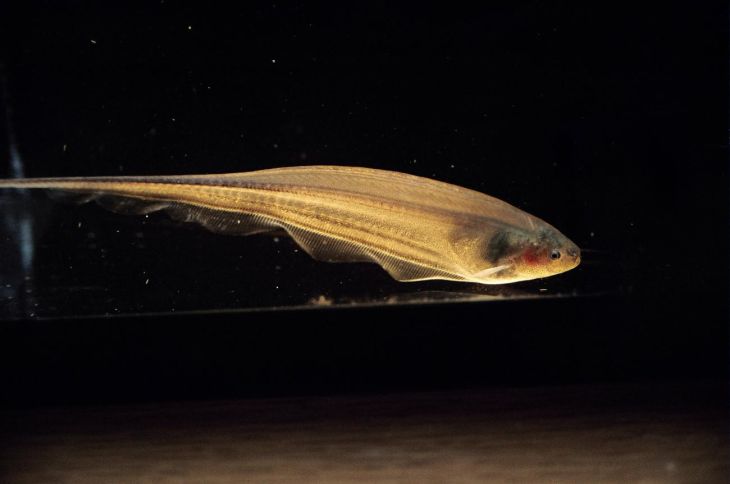- Name
- Roberto Molar Candanosa
- [email protected]
- Office phone
- 443-997-0258
- Cell phone
- 443-938-1944
An electric knifefish shimmies in the water for the same reason a dog sniffs or a human glances around a new place—to make sense of their surroundings. For the first time, scientists demonstrate that a wide range of organisms, even microbes, perform the same pattern of movements in order to sense the world.
The research, which has implications for cognition and robotics, was published today in Nature Machine Intelligence.
"Amoeba don't even have a nervous system, and yet they adopt behavior that has a lot in common with a human's postural balance or fish hiding in a tube," said study author Noah Cowan, a professor of mechanical engineering at Johns Hopkins. "These organisms are quite far apart from each other in the tree of life, suggesting that evolution converged on the same solution through very different underlying mechanisms."

The findings stem from the team's efforts to figure out what the nervous system does when animals move to improve their perception of the world, and whether that behavior could be translated to robotic control systems.
While watching electric knifefish in an observation tank, the researchers noticed how when it was dark, the fish shimmied back and forth significantly more frequently. When lights were on, the fish swayed gently with only occasional bursts of rapid movement.
Knifefish in the wild are hardwired to find refuge to avoid predators. They emit weak electric discharges to sense their location and find shelter. Wiggling rapidly allows them to actively sense their surroundings, especially in dark water. In the light, they still make such rapid movements, just far less frequently.
"We found that the best strategy is to briefly switch into explore mode when uncertainty is too high, and then switch back to exploit mode when uncertainty is back down," said first author Debojyoti Biswas, a Johns Hopkins postdoctoral researcher.
This is the first time scientists deciphered this mode-switching strategy in fish. It's also the first time anyone has linked this behavior across species.
The team created a model that simulates the key sensing behaviors, and using work from other labs, spotted the same sensory dependent movements in other organisms. Creatures that shared the behavior with the fish included amoeba, moths, cockroaches, moles, bats, mice, and humans.
"Not a single study that we found in the literature violated the rules we discovered in the electric fish, not even single-celled organisms like amoeba sensing an electric field," Cowan said.
Scientists are just beginning to understand how animals control sensing movements unconsciously. The team suspects all organisms have a brain computations that manage uncertainty.
"If you go to a grocery store, you'll notice people standing in line will change between being stationary and moving around while waiting," Cowan said. "We think that's the same thing going on, that to maintain a stable balance you actually have to occasionally move around and excite your sensors like the knifefish. We found the statistical characteristics of those movements are ubiquitous across a wide range of animals, including humans."
The team expects the findings can be used to improve search and rescue drones, space rovers, and other autonomous robots.
Next they will test whether their insights hold true for other living things—even plants.
Authors include Andrew Lamperski of University of Minnesota Minneapolis; Yu Yang of Johns Hopkins; Kathleen Hoffman of University of Maryland, Baltimore County; John Guckenheimer of Cornell University; and Eric S. Fortune of New Jersey Institute of Technology.
The work was supported by the Office of Naval Research grant N00014-21-1-2431 and the National Science Foundation grant 2011619.















